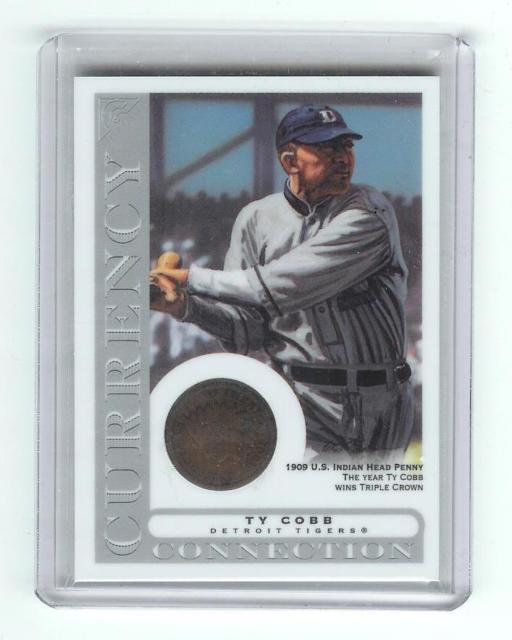At a baseball card show yesterday, I found a unique addition to my collection. It combines my passion of coin collecting with the growing assemblage of baseball cards in my possession. I attribute my interest in both of these areas to my childhood neighbor, the late Robert P. Herzberg. Bob showed me my first 1909 S V.D.B. penny and flaunted his enviable stack of baseball cards bearing the likeness of Mickey Mantle, another Triple Crown winner. I still don’t have either one of these coveted memories of youth in my collection.
I had a crush on Bob’s little sister, who was in my kindergarten class. I also maintained a friendly relationship with his younger brother into adulthood. Bob, who was three years older, passed away at the age of 54 as a consequence of congestive heart failure. I still bear a scar in the center of my forehead thanks to a war game we were playing as kids. I was dodging rocks he was throwing at a playhouse in the park behind our house. He hit me square in the head as I carelessly looked out a window, requiring several stitches, and I remember him having to apologize to my parents and me. He brought a box of unopened baseball cards as a peace offering, so it was probably worth the pain.
I bought a unique 2003 Topps Ty Cobb baseball card at yesterday’s show, commemorating the Hall of Famer’s 1909 American League Triple Crown achievement (.377 batting average, 9 home runs, 107 RBI). His Detroit Tiger ball club lost the World Series to Honus Wagner and the Pittsburgh Pirates. The Chicago Cubs also beat the Tigers in the previous two World Series, making him a “Triple Loser” in the game’s crowning moment. The card is die-cut to accommodate a 1909 Indian Head penny. I was immediately intrigued since 1909 was the last year of Indian Head production and the first year of the Lincoln cent. The change occurred to honor the 100th anniversary of Abraham Lincoln’s birth.
Bob taught me long ago that the 1909 S VDB Lincoln version was the most valuable penny in any collection. Victor David Brenner, the coin’s designer included his initials between the wheat ear stalks on the back during its inaugural year, but the San Francisco (S) mint makes it particularly valuable because only 484,000 were made. Even as a young child, a penny worth $100 was mind-boggling and Bob actually owned one. Today, depending on condition, it would probably cost me at least $500 to buy one. I’ve looked through thousands of pennies since I was a kid and never found one. It was the closest thing to treasure hunting that I have ever experienced. In fact, anytime I see a penny on the ground or get one in change, I pick it up to check.
The Tyrus Raymond Cobb Currency Connection card brought back many childhood Bob memories about both baseball cards and pennies. Ty was a great ball player but a miserable human being. I would have never bought the card if it weren’t for the penny. I carefully examined it to see if it had the S mint-mark on the back below the wreath. The designer of that coin was James B. Longacre, whose “JBL” initials graced a number of U.S. coin designs of the late 19th century. To this date, Lincoln’s portrait still is identified with the penny, although the back of the coin changed to the Lincoln Memorial in 1959, designed by engraver Frank Gasparro to celebrate the 150th anniversary. On the front side, the VDB initials have appeared below Lincoln’s shoulder since 1918.
To honor the Lincoln bicentennial in 2009, 4 different designs by four different artists were introduced on the back of the penny and in 2010 it was again changed to represent the unity of the states. This “Union Shield” look was designed by Lyndall Bass. I would not anticipate another design change until 2059, 150 years after Ty Cobb won baseball’s Triple Crown and Lincoln’s first penny was minted.

Leave a Reply